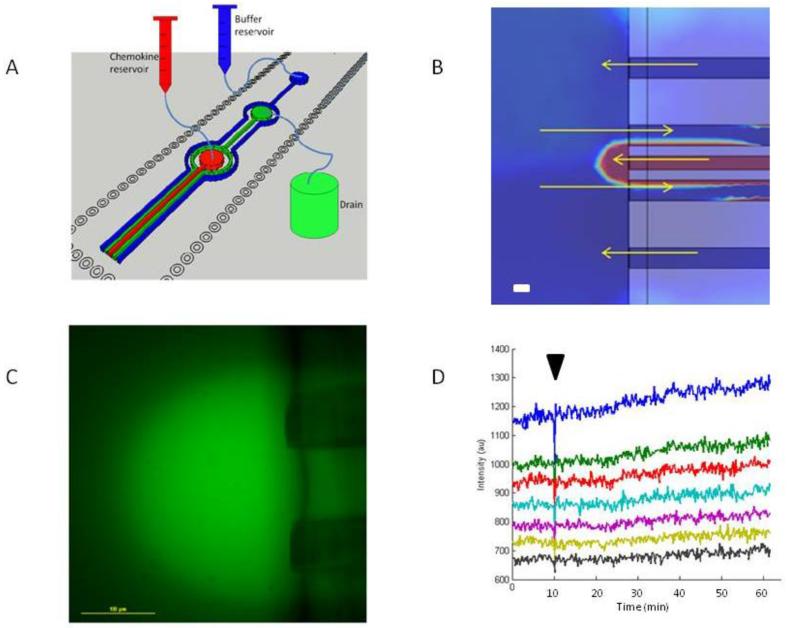Fig 2.
Design and characterization of the floating microfluidic gradient generator (A) A 3D image of the gradient generator channels. The centre red channel (100 × 100 × 100 μm3) has an inlet at its top allowing for chemokine to be flowed into the channel and out its end onto a glass slide. The inner two green centre channels (100 × 100 × 100 μm3) come together at an outlet from which solution is removed from the slide. The outermost two blue channels (100 × 100 × 100μm3) share an inlet into which buffer can be flowed into the channel and out the ends onto the glass slide to contain the chemokine from the centre channel. The flow within the device is gravity driven with reservoirs of chemokine and buffer positioned above the gradient generator and a reservoir for the drain being positioned below. (B) A COMSOL simulation of the concentration of chemokine in the gradient generated from the device. A semi-circular gradient can be seen at the end of the centre channel. The flow patterns from the two outermost channels to the drain channels create a functional boundary to help confine the chemokine around the centre channel. In the absence of the outermost channels, chemokine could diffuse continuously into the dish and result in a temporal increase in the chemokine concentration for all the cells, including the tracked ones.(C) A FITC fluorescent dye was loaded into the centre channel to characterize the semi-circular gradient formed by the chemical in the centre channel of the gradient generator. Scale bar 100 μm. (D) A kymograph showing the linear intensity of the gradient at various distances from the centre channel to the edge of the gradient against time demonstrates the stability of the gradient over time. A perturbation in the environment was introduced 10 minutes into the experiment (marked by a black arrow) by moving the stage over 100 μm to demonstrate that the gradient returns to a stable state after external disturbances.

